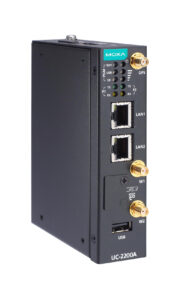Moxa introduced its first embedded industrial computers to feature 64-bit ARM architecture to help asset owners address increased processing demands from new technologies. Built around an Arm Cortex-A53 dual-core 1 GHz processor, Moxa’s UC-2200A is an economical, reliable gateway for embedded data acquisition boasting a wide range of interface options, a compact footprint, and compliance with IEC 62443-4-2 cybersecurity […]
Computer
Post-quantum crypto standardization — background
At some point in the not-too-distant future, it’s expected that quantum computing will pose a security risk to all currently used encryption techniques. Most current encryption methods are based on the challenges associated with factoring large numbers into their prime factors. They provide good levels of security when classical computers are being used, but quantum […]
Post-quantum crypto standardization — what’s the end game?
The post-quantum cryptography (PQC) standardization program being run by the National Institute of Standards and Technology (NIST) is developing encryption algorithms to protect classical computers from attacks by quantum computers. NIST has announced the first four PQC algorithms and is preparing them for final development. In the meantime, organizations of all types are analyzing the […]
What are the five types of quantum computers?
There are several ways to make the quantum bits (qubits) that comprise quantum computers. The classic image of the “chandelier” descending into a cryostat only represents qubits that need to operate near 0 Kelvin (K). They are used by IBM, Google, and others, but those pictures present a very limited view of quantum computing. This […]
Post-quantum crypto standardization — what’s next?
Analysis and possible pushback from users may be among the next steps in the development of post-quantum cryptography (PQC) by the National Institute of Standards and Technology (NIST). NIST has started the process of standardizing the four finalist algorithms. That’s the last step before developing the mathematical tools and making the tools available so developers […]
Post-quantum crypto standardization — where we are
Post quantum cryptography (PQC) standardization is a program being run by the National Institute of Standards and Technology (NIST). It began in 2016, and by the end of 2017, NIST had received 82 submissions, of which 69 were accepted for further consideration. Through successive rounds of elimination, the number of proposals dropped from 69 to […]
What’s quantum control and how is it used?
Quantum control has several uses. Its primary use is to prevent the performance degradation of quantum computers as a result of the decoherence of qubits. It’s also an important function in the field of quantum sensing; for information on that application, see the FAQ on “What’s a quantum sensor?” This FAQ reviews the current status […]
Small processor board power handheld and DIN-rail computing
Congatec will be presenting its comprehensive COM-HPC ecosystem at embedded world 2023 (hall 3 / booth 241). The portfolio now ranges from high-performance COM-HPC server-on-modules to ultra-compact and brand-new COM-HPC client-on-modules that are hardly larger than a credit card. Together with the accompanying tailored cooling solutions, carrier boards, and design-in services, Congatec now provides […]
Palm-size computer board features modular I/O options
Premio Inc. is set to launch its RCO-1000-EHL Fanless Mini Industrial computer supported by Intel 11th Generation Celeron J Series (Elkhart Lake) Processors at ATX West. Held February 7 – 9 at the Anaheim Convention Center, ATX West is the premiere advanced manufacturing event showcasing the latest in industrial automation and robotics for Industry 4.0. The RCO-1000-EHL […]
Computer-on-modules boost performance with new processors
congatec announces the availability of COM-HPC and COM Express Computer-on-Modules based on high-end 13th Gen Intel Core processors in BGA assembly. congatec expects series production of OEM designs based on these new modules to ramp up quickly and massively as the new processors with long-life availability offer vast improvements in many features yet are fully […]










